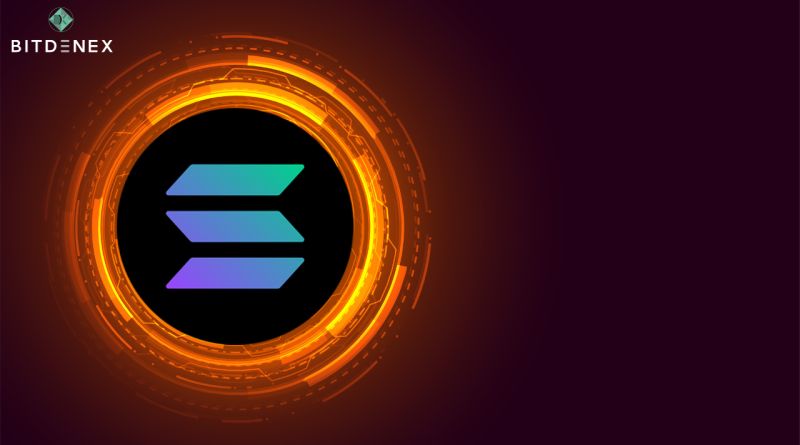What is Solana, and how does it work?
What is Solana?
Solana is an open-source project that is creating a new layer-1 blockchain that is permissionless and fast. A blockchain created by former Qualcomm CEO Anatoly Yakovenko in 2017 aims to increase throughput beyond what popular blockchains can achieve while keeping prices low. Solana employs a unique hybrid consensus architecture that combines a novel proof-of-history (PoH) technique with a lightning-fast proof-of-stake (PoS) synchronization engine. Solana could theoretically handle more than 710,000 transactions per second (TPS) without scaling solutions. In addition to smart contracts and decentralized applications, Solana’s third-generation blockchain architecture enables the development of smart contracts. The project is compatible with a number of DeFi systems as well as nonfungible token (NFT) marketplaces.
What makes Solana unique?
Solana’s ambitious design aims to solve the blockchain trilemma, a concept articulated by Ethereum creator Vitalik Buterin, in an innovative way. This trilemma explains three significant issues that blockchain developers confront when constructing them: decentralization, security, and scalability. It is often assumed that blockchains are designed in such a way that developers must compromise one of the three benefits in order to supply the other two at the same time.
The Solana blockchain platform uses a hybrid consensus method to maximize the speed at the expense of decentralization. This blockchain venture is one of a kind because it combines PoS and PoH in a revolutionary manner.
In general, blockchains have greater scalability; the more and better they scale, the more transactions per second they can support. However, time differences and increased throughput slow down decentralized blockchains, requiring additional nodes to verify transactions and timestamps. Solana’s approach, in a nutshell, A PoS mechanism is used to pick one leader node based on how communications between nodes are sequenced. Solana benefits from the lower effort, resulting in higher throughput even without a centralized time source.
How does Solana work?
The Solana protocol’s key component is proof-of-history, which is a series of calculations that results in a digital record that confirms that an event occurred on the network at any point in time. It can be viewed as a cryptographic clock that assigns a timestamp to every network transaction and a data structure that can be easily extended. A PoH protocol is based on PoS and uses the Tower Byzantine fault tolerance (BFT) algorithm, an optimized version of the practical Byzantine fault tolerance (pBFT). Solana employs it to reach an agreement. The Tower BFT keeps the network secure and operational, and it also serves as an extra tool for transaction validation.
Furthermore, PoH can be viewed as a high-frequency Verifiable Delay Function (VDF), a three-part function (setup, evaluation, and verification) that generates distinct and consistent output.. VDF preserves network order by establishing that block makers have waited long enough for the network to progress. Solana uses a 256-bit secure hash algorithm (SHA-256), which is a set of patented cryptographic operations that yields a 256-bit output. On a regular basis, the network samples the quantity and SHA-256 hashes, supplying real-time data based on the set of hashes included in central processing units.
The Solana (SOL) token
It is the native and utility coin of Solana that enables wealth transfer as well as blockchain security through staking. SOL was founded in March 2020 with the intention of becoming one of the top ten cryptocurrencies to join the market in terms of total market value. The SOL token network operates similarly to the Ethereum network. Despite their comparable functions, Solana token holders must stake the token in order for transactions to be validated via the PoS consensus process. Furthermore, the Solana coin (SOL) is used to gain awards and pay transaction costs, and SOL allows users to participate in governance.
Solana vs. Ethereum
Solana has garnered numerous compliments for its speed and performance, and it has even been mentioned as a legitimate challenger to crypto industry titans like Ethereum. So, What makes Solana different from Ethereum, and can it be considered a potential Ethereum killer? Solana is capable of challenging the dominant smart contract platform in terms of processing speed, allegedly hitting speeds of over 50,000 TPS. Solana implements a number of consensus methods to avoid slow transaction confirmation. Because of this functionality, Solana is one of the quickest blockchains in the industry, allowing it to compete with industries outside of the crypto space. Compared to this massive number, the existing Ethereum proof-of-work architecture can only manage 15 TPS.
The downsides of Solana
If you’re still wondering whether Solana is a decent investment and whether you should acquire it, it is entirely yours. Despite its evident advantages, Solana, like any other crypto initiative, has downsides. To begin, while the Solana blockchain can compete with high-end blockchain projects, the minimal number of blockchain validators makes it vulnerable to centralization. Anyone on the network can become a Solana validator, however doing so is challenging due to the large amount of computational power required. In addition, the protocol still refers to itself as a beta version of the mainnet, which implies that flaws and errors are probable. Solana is one of the largest ecosystems in the crypto sector and appears to be on the right track.
Buy and sell crypto in minutes with 0.20% trading fees at Bitdenex Exchange.

